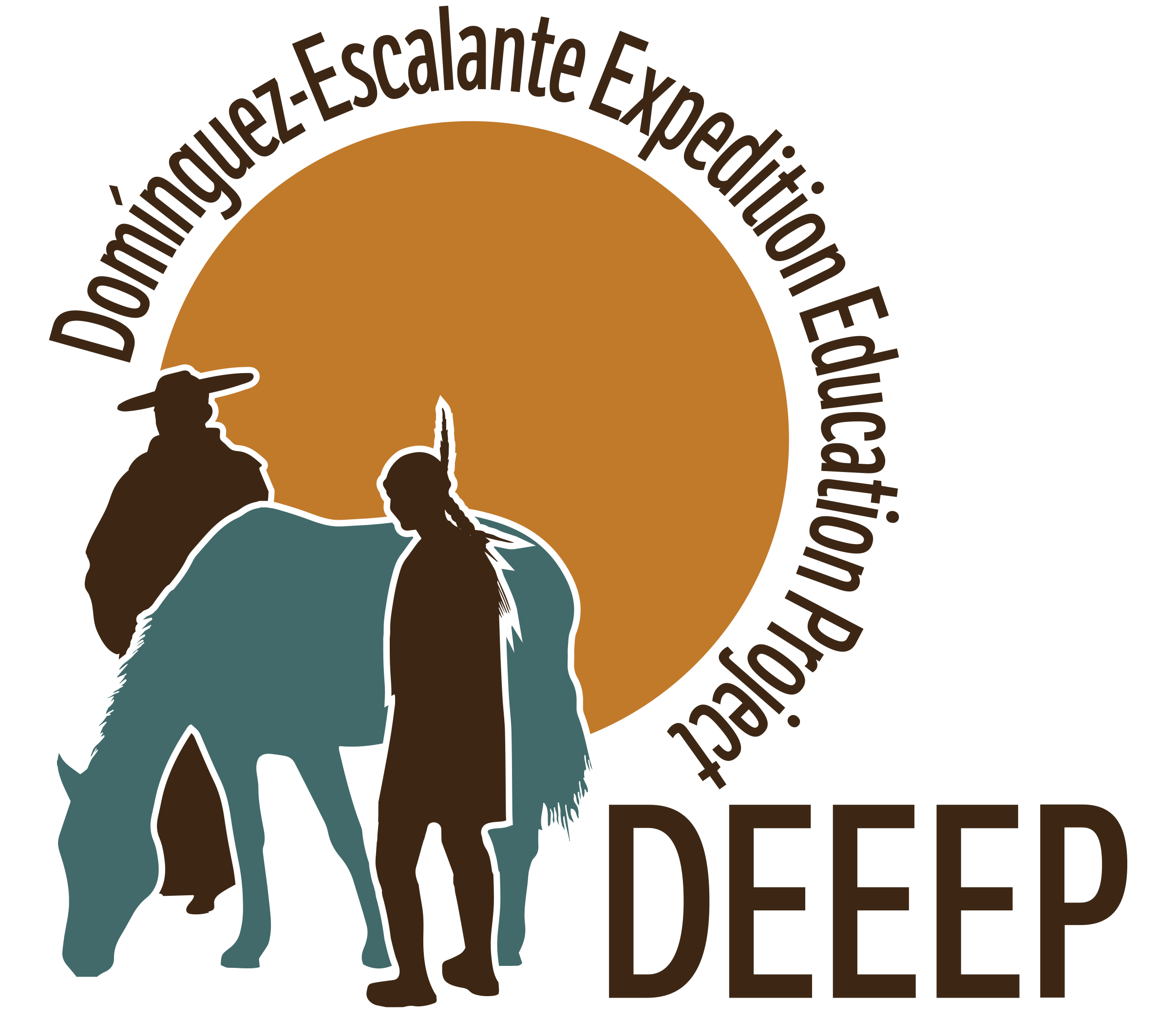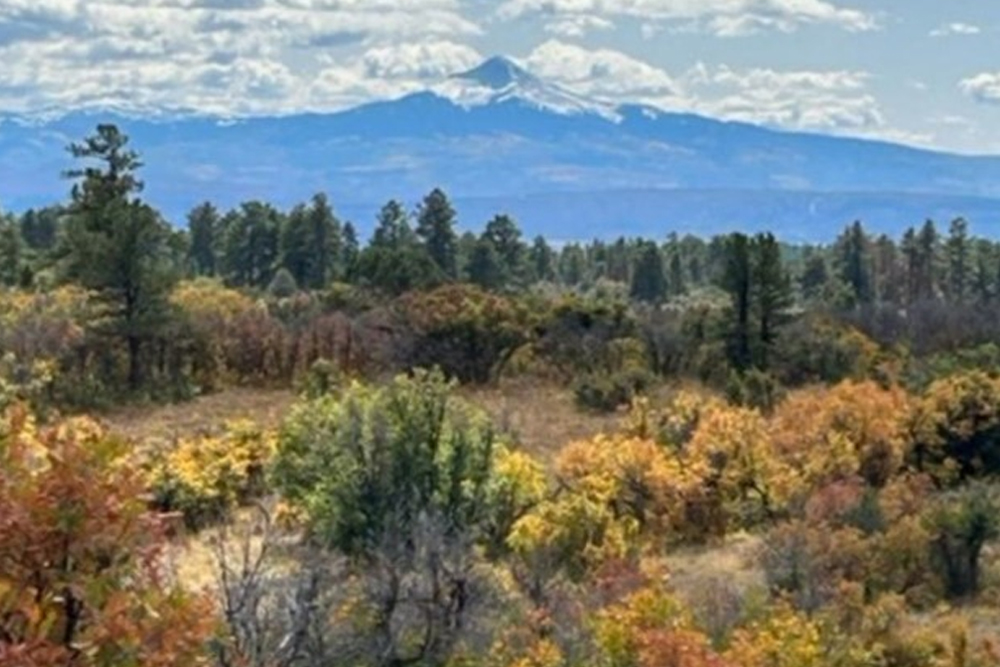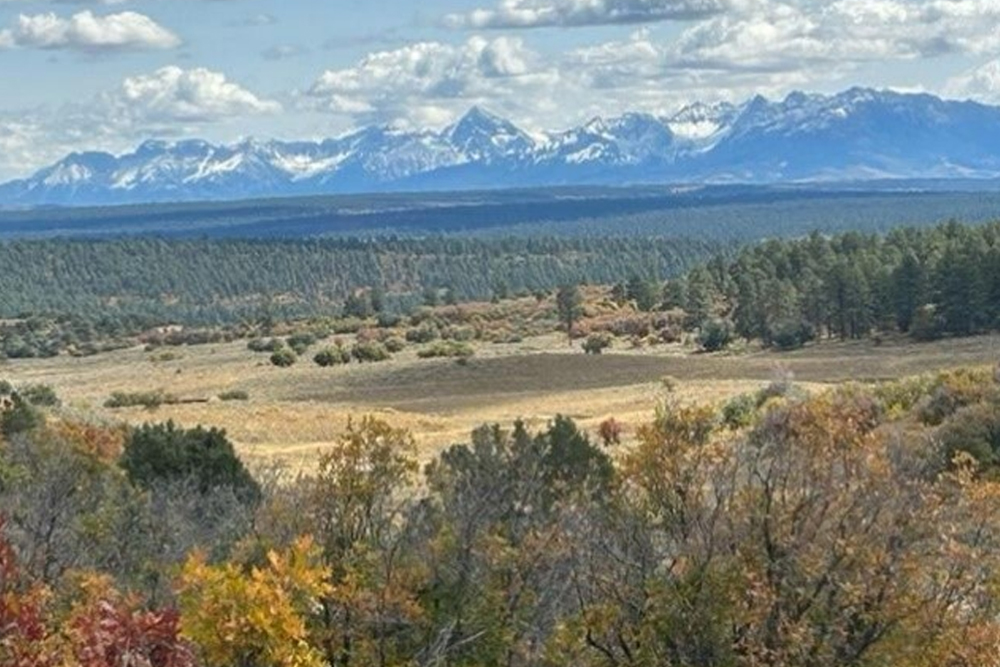August 24
Camp Name
Deep Valley
Camp Name (Spanish)
La Cañada Honda
Brightness of the Moon
71%
Distance Traveled
2 leagues / 5 miles
Daylight
13 hours / 23 minutes
Water Resources
A “copious spring of good water”
Journal Description for August 24th
On the 24th, before twelve, the said Yuta arrived where we were waiting for him—with his family, two other women, and five children, two of these at the breast and three from eight to ten years of age, all of good features and very friendly. They thought we were here to trade, and so they brought cured deerskins and other things to barter. Among these they had raisins of black manzanita, about which we already spoke at the beginning of this diary and which are very much like those of small grapes, and very tasty. We gave them to understand, although they did not wholly believe it, that we were not here for what they thought, or carried goods for trading. And lest they took us for scouts intending to conquer their land after we had seen it, and hence impede our progress — judging within ourselves that a report from the Cosninas about the trip made by the Reverend Padre Fray Francisco Garcés111Refers to Fray Francisco Garcés’ report of his expedition to Hopi from the mouth of the Colorado River, which he wrote to the Reverend Father Minister of Zuñi (Vélez de Escalante) from the village of Oraibi on July 3, 1776, and which was forwarded to Domínguez and Escalante in Santa Fe by Fray Mariano Rosete in Zuñi on July 6, 1776. These letters are in Adams and Chavez, Missions, pp. 281-86. might have passed on to the Payuchi Yutas,112The Southern Paiute Indians. and from the latter to the rest — we said that a certain padre, a brother of ours, had come to Cosnina113The Havasupai Indians. and Moqui114The Hopi Indians. and that from here he had gone back to Cosnina.
With this they were allayed, fully sharing in our worry, and said that they had not received any news concerning said padre. We fed them all, and our guide’s wife presented us with a bit of jerked deer meat and two dishes of raisin or dried manzanita, and we returned her the favor with flour. After midday we gave the Yuta what he requested for leading us, which were two big all-purpose knives and sixteen strings of white glass beads. These he turned over to his wife, who, along with the other women, went off to their camps at the time we set out from La Fuente de la Guía with him (whom we began calling Atanasio from here on.)115It appears that they named their Indian guides after members of the expeditionary party: Atanasio after Fray Atanasio Domínguez, Silvestre after Fray Silvestre Vélez de Escalante, and Joaquín after Don Joaquín Laín.
We traveled along the sierra’s flank for half a league to the east, another half east-southeast, and a quarter league southeast. We turned east again, leaving a path which goes to the southeast as it takes off from the one we were following; and after going three- quarters of a league, one-quarter southeast and two east, we stopped in a narrow valley, the descent and ascent of which are very steep but not difficult. For this reason we called it La Cañada Honda.116“The Deep Valley.” Across the Uncompahgre Plateau they came to Red Canyon, a very deep one, and descended its steep northern end and camped there on the branch of Horsefly Creek, which runs through the canyon. In it there is a copious spring of good water, much firewood, and abundant pasturage for the mounts. Today two leagues.117Slightly over five miles.
Scroll to the bottom to view photos.
Notable Event
Reaching La Cañada Honda (a steep narrow canyon).D&E and Crew Activity
The Ute Guide returned with his family.Miller Report Summary
The Ute agreed to lead the company to his people and guided them from that point to the Uncompahgre River. The route was by way of upper Horse Fly Creek for a campsite of August 24.DEEEP’s Field Notes
Copyright © 2024, DEEEP Colorado. All Rights Reserved.
August 24, 1776
Coordinator’s Notes:
The Uncompahgre Plateau Research team was made up of Glade Hadden, Linda Adkins, Bob McKeever and Tony Adkins. They provided the research for August 23 – 26, 1776. The team came up with two different theories. The first is provided by Glade Hadden and the second by Linda Adkins.
An interesting challenge for the research team was the translation of the word: “Cañada”
Taken from Translator’s Notes by Fray Angelico Chavez
The Domínguez-Escalante Journal Edited by Ted J. Warner and translated by Fray Angelico Chavez and published 1976 by Brigham Young University Press. Page xi
“However, this humble expertise ended here, for my not having any personal knowledge, unfortunately, of the topography covered by the diary – something just as paramount for rendering geographical and related features more faithfully. Naturally, I ceded complete liberty to those individuals who have an intimate knowledge of the terrain, for them to ascertain whether, for example, Escalante’s arroyos were mere washes or deep canyons, or his álamos cottonwoods or mountain poplars or aspens”
When asked how to translate “cañada,” Donna Tang, PhD, a DEEEP member and a translator and paleographer from Arizona, replied: “It’s clearly a gap between two hills.”
Javier Torre, a DEEEP member and professor of Spanish Language, Literary and Cultural Studies at the University of Denver, was also asked for a translation of the word:
“Cañada” is a Spanish word that refers to a mountain pass between two mountain tops, or to the space situated in between two nearby mountains. A secondary meaning of the word is “rural path used to transport cattle”.
In the translation of the Domínguez-Escalante journal that you are consulting it has been translated as “valley”. This word choice might be misleading, particularly if you are trying to identify a specific geographical location. It might be better to use the word “glen” (narrow valley).
By Glade Hadden: PhD: Archaeologist, BLM (retired)
Before noon on the 24th, the Ute guide returned to the Spanish camp along with several of his family (his two wives and five children). After some limited trading and discussion, the Ute man (whom the fathers named “Atanasio”) agreed to guide the party across the Uncompahgre and was given two knives and several strings of glass beads for his services.
Departing their campsite in the early afternoon, the party traveled eastward and southeast along the flank of the ridge (above Cottonwood Creek). By afternoon, the party had reached a steep and narrow canyon La Canada Honda (a deep arroyo or low pass) with a copious spring of good water, much firewood and abundant pasturage for the mount’s”. (NOTE: This low pass or deep arroyo could refer to either little Cottonwood Creek or the main fork of Cottonwood Creek. Alternatively, the deep canyon could refer to Red Canyon and Horsefly Creek which is much steeper though far less easily traveled on horseback).
By Linda Adkins: DEEEP Team Member
August 24 – Before noon, the Ute arrived with his extended family, who were friendly and traded dried fruit and smoked deer for flour. The Ute was given knives and beads for his guide services; he was given the name “Atanasio”, and together they set out from La Fuente de la Guía. Until now, the party had been traveling steadily north and east; the guide directed them to a trail heading south east. They moved 5 miles along the same elevation till stopping in a deep narrow valley, which they named La Canada Honda (the Deep Valley or the Deep Gap) most likely Red Canyon, crossing near the southern end.



